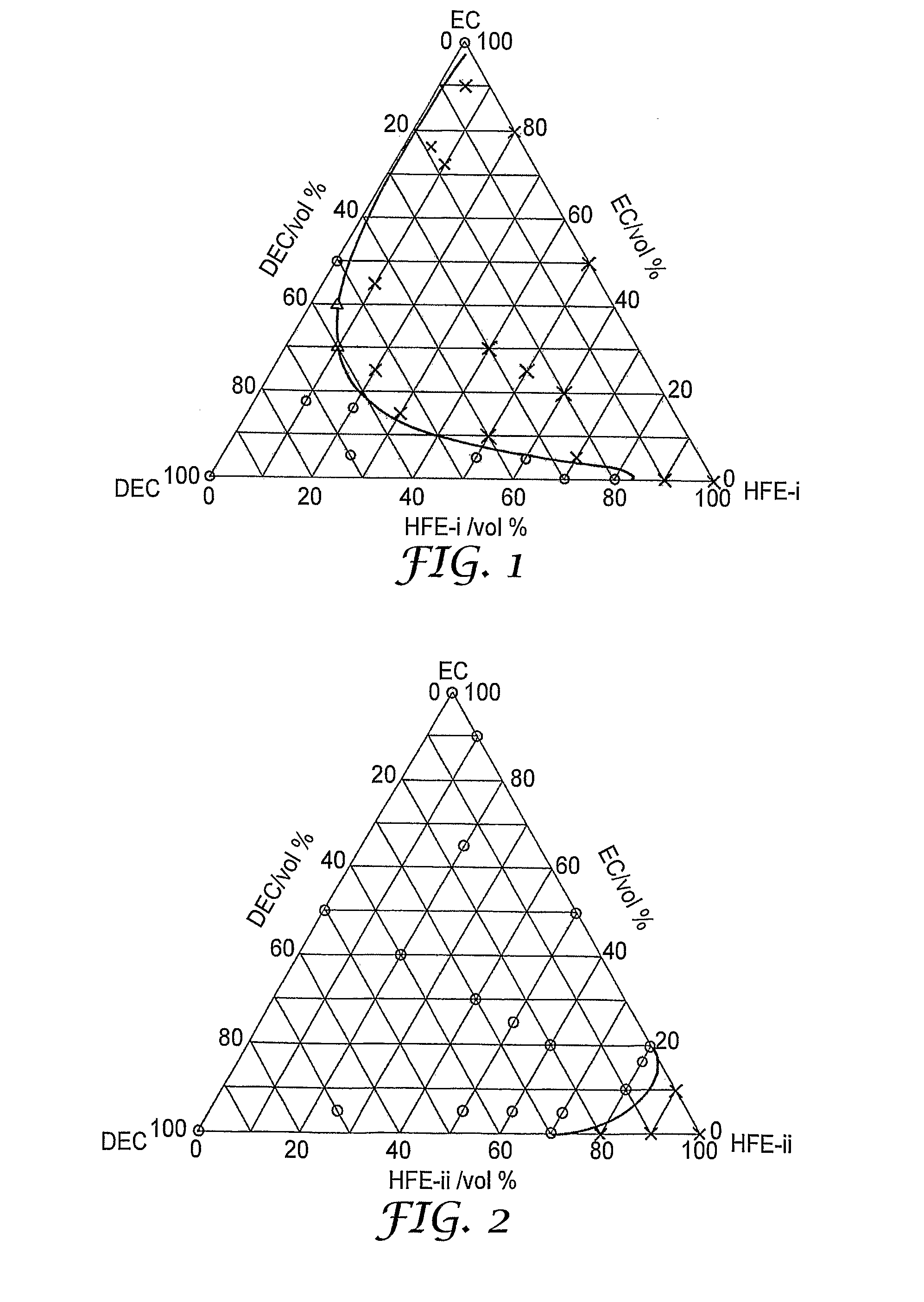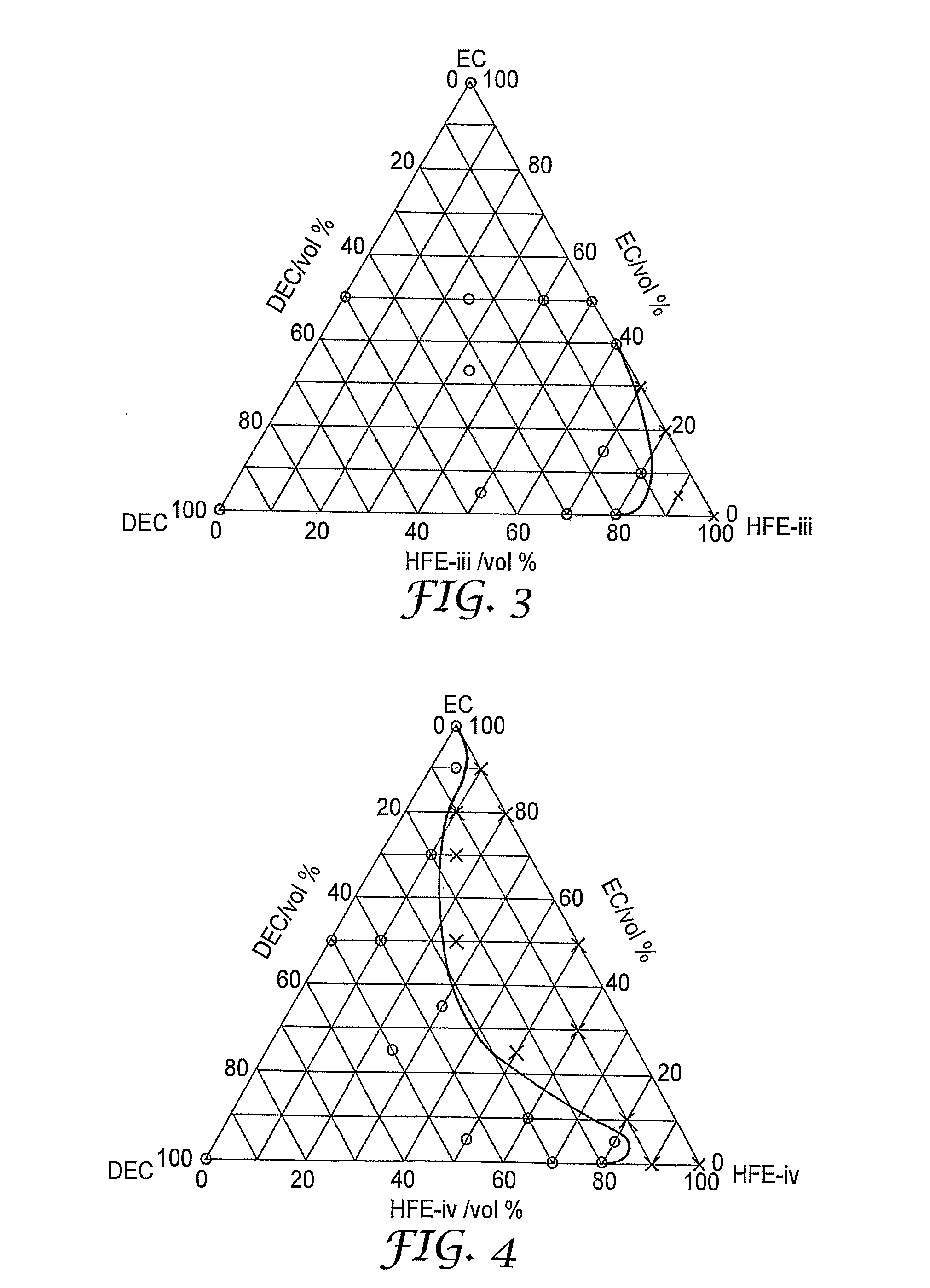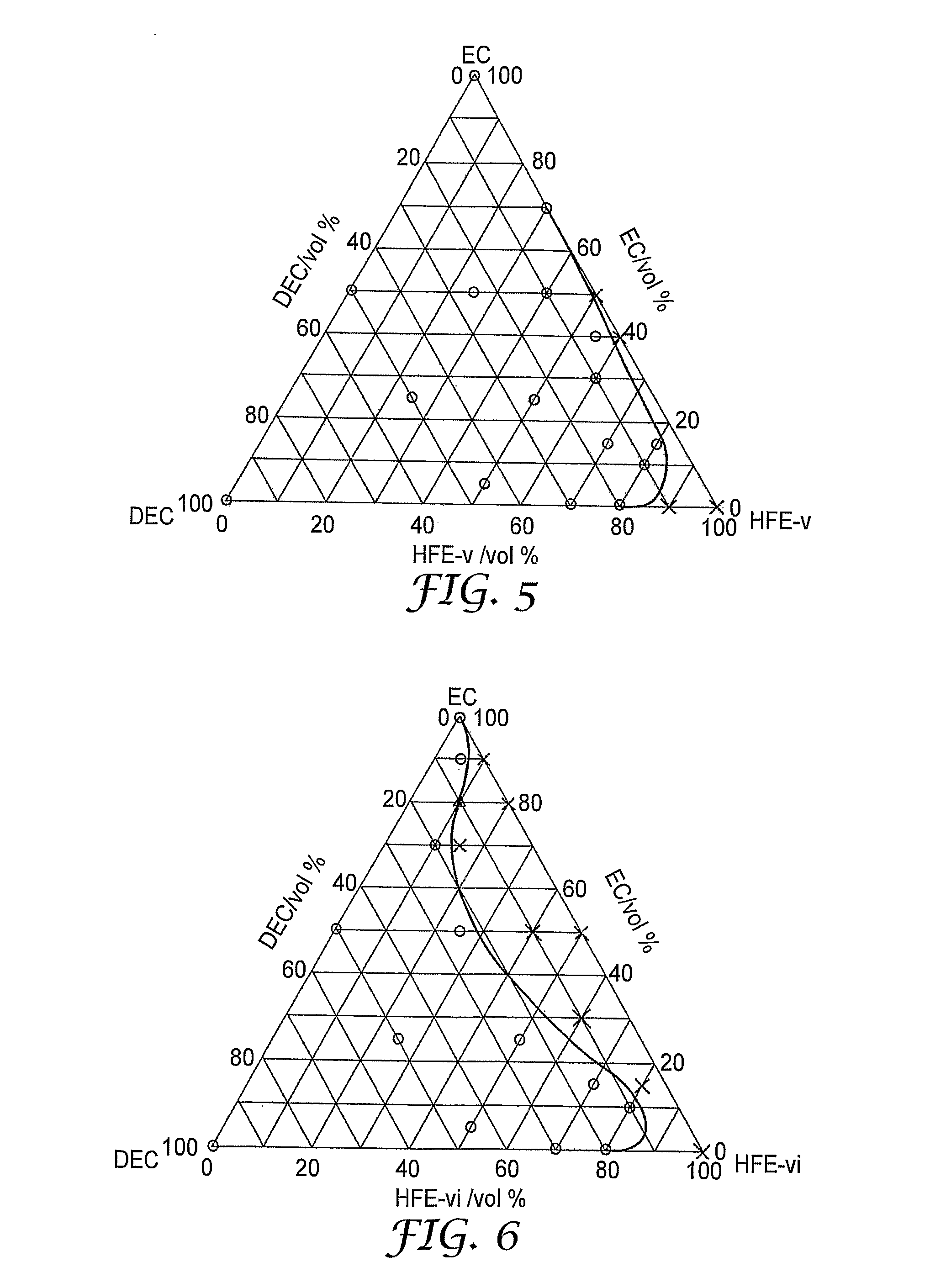Electrolyte Solutions For Electrochemical Energy Devices
a technology of electrochemical energy devices and electrolyte solutions, which is applied in the direction of non-aqueous electrolyte cells, cell components, electrochemical generators, etc., can solve the problems of limited improvement in some characteristics, difficult to realize a practical battery from a comprehensive viewpoint, and inability to generally use water as a solvent for electrolytic or electrolyte solutions, etc., to achieve high charge/discharge rate capability, improve safety characteristics, and improve performan
- Summary
- Abstract
- Description
- Claims
- Application Information
AI Technical Summary
Benefits of technology
Problems solved by technology
Method used
Image
Examples
examples
[0069]The present invention will now be explained by examples. The following abbreviations are used throughout the examples.
[0070]Ethylene carbonate (“EC”)
[0071]Propylene carbonate (“PC”)
[0072]Diethyl carbonate (“DEC”)
[0073]Ethyl methyl carbonate (“EMC”)
[0074]Dimethoxyethane (“DME”)
[0075]Tetrahydrofuran (“THF”)
[0076]Tetrahydropyran (“THP”)
[0077]C2F5CF(CF(CF3)2—OCH3 (“HFE-i”)
[0078]CF3CFHCF2OC2H4OCF2CFHCF3 (“HFE-ii”)
[0079]CF3CFHCF2OCH2CH2CH2OCF2CFHCF3 (“HFE-iii”)
[0080]CH3—O—C6F12—O—CH3 (“HFE-iv”)
[0081]H—C6F12—CH2—O—CH3 (“HFE-v”)
[0082]H—C8F16—CH2—O—CH3 (“HFE-vi”)
[0083]C3F7—O—C2HF3—O—C2H4—O—C2HF3—O—C3F7 (“HFE-vii”)
[0084]C2HClF3—O—C2H4—O—C2HClF3 (“HFE-viii”)
[0085]CF3CFHCF2—O—CH2CH(CH3)—O—CF2CFHCF3 (“HFE-ix”)
[0086]CF3—CFHCF2—O—CH2CH(OCF2CFHCF3)—CH2—O—CF2CFHCF3 (“HFE-x”)
[0087]CF2HCF2—O—C2H4—O—CF2CF2H (“HFE-xi”)
[0088]Lithium bis(pentafluoroethanesulfonyl)imide (FLUORAD FC-130 or FLUORAD 13858 by Sumitomo 3M Co., Ltd.) (“LiBETI”)
[0089]Lithium hexafluorophosphate (LiPF6)
[0090]Lithium bis(trif...
experiment b (
Lithium Deposition / Dissolution Cycle Efficiency)
[0103]Using a nickel foil punched out into a circle as the working electrode (5 μm thickness, 16.16 mm diameter, 2.05 cm2 area on each side) and metal lithium punched out into a circle (0.3 mm thickness, 16.16 mm diameter, 2.05 cm2 area on each side) as the counter electrode, the electrodes were situated opposite each other across a polypropylene porous separator punched out into a circle (19 mm diameter, 25 μm thickness), to fabricate a coin-type two-electrode cell. The nonaqueous electrolytes used were those shown in Table B. First, lithium was deposited on a nickel plate for 1 hour or 3 hours at a current density of 0.2 mA / cm2 based on the electrode area, followed by a 10 minute rest period. Next, the lithium on the nickel plate was dissolved up to a cell voltage of 1.5 V at a current density of 0.2 mA / cm2, followed by a 10 minute rest period. This lithium deposition / dissolution process was defined as one cycle, and either 15 or 30 ...
PUM
| Property | Measurement | Unit |
|---|---|---|
| boiling point | aaaaa | aaaaa |
| voltage | aaaaa | aaaaa |
| boiling points | aaaaa | aaaaa |
Abstract
Description
Claims
Application Information
 Login to View More
Login to View More - R&D
- Intellectual Property
- Life Sciences
- Materials
- Tech Scout
- Unparalleled Data Quality
- Higher Quality Content
- 60% Fewer Hallucinations
Browse by: Latest US Patents, China's latest patents, Technical Efficacy Thesaurus, Application Domain, Technology Topic, Popular Technical Reports.
© 2025 PatSnap. All rights reserved.Legal|Privacy policy|Modern Slavery Act Transparency Statement|Sitemap|About US| Contact US: help@patsnap.com



